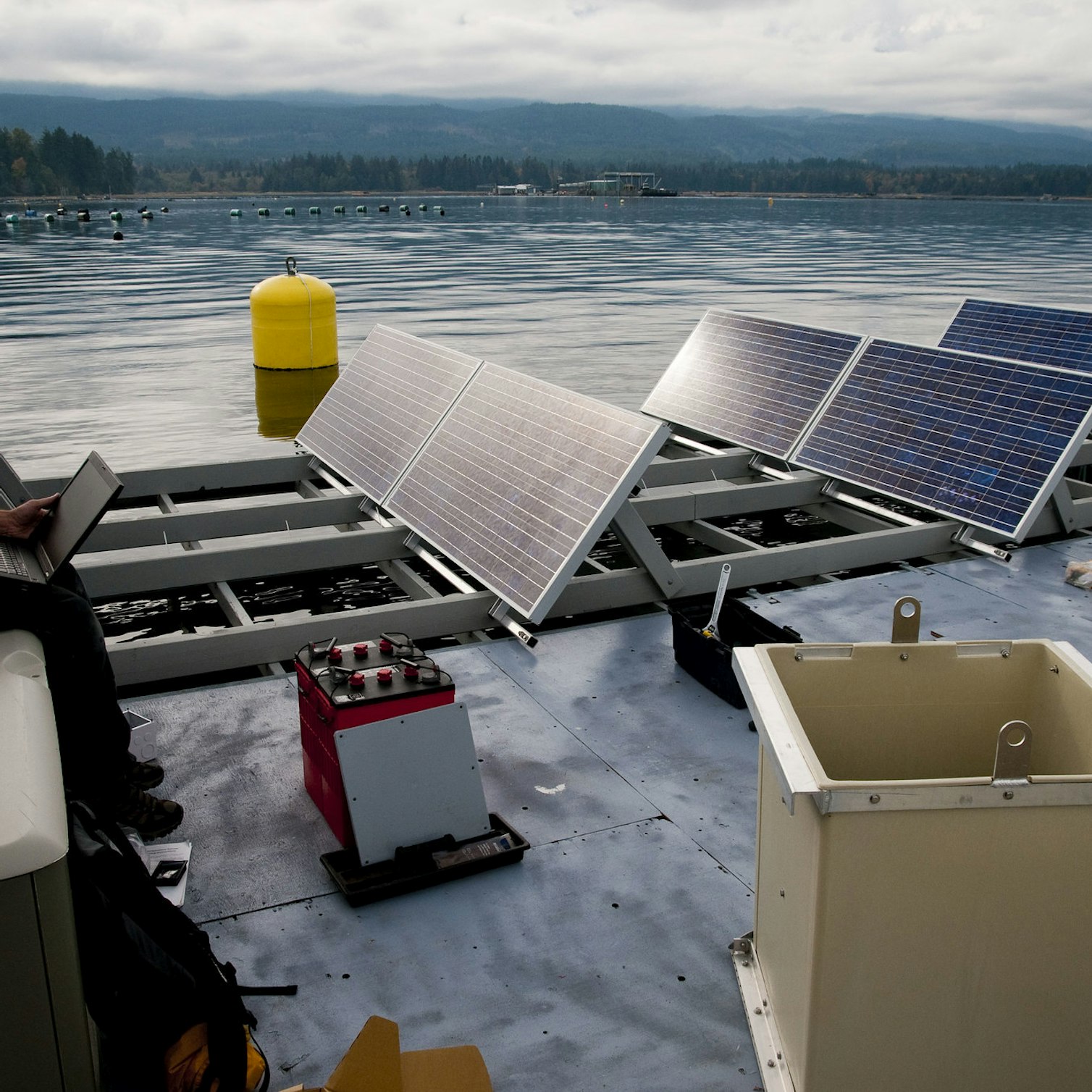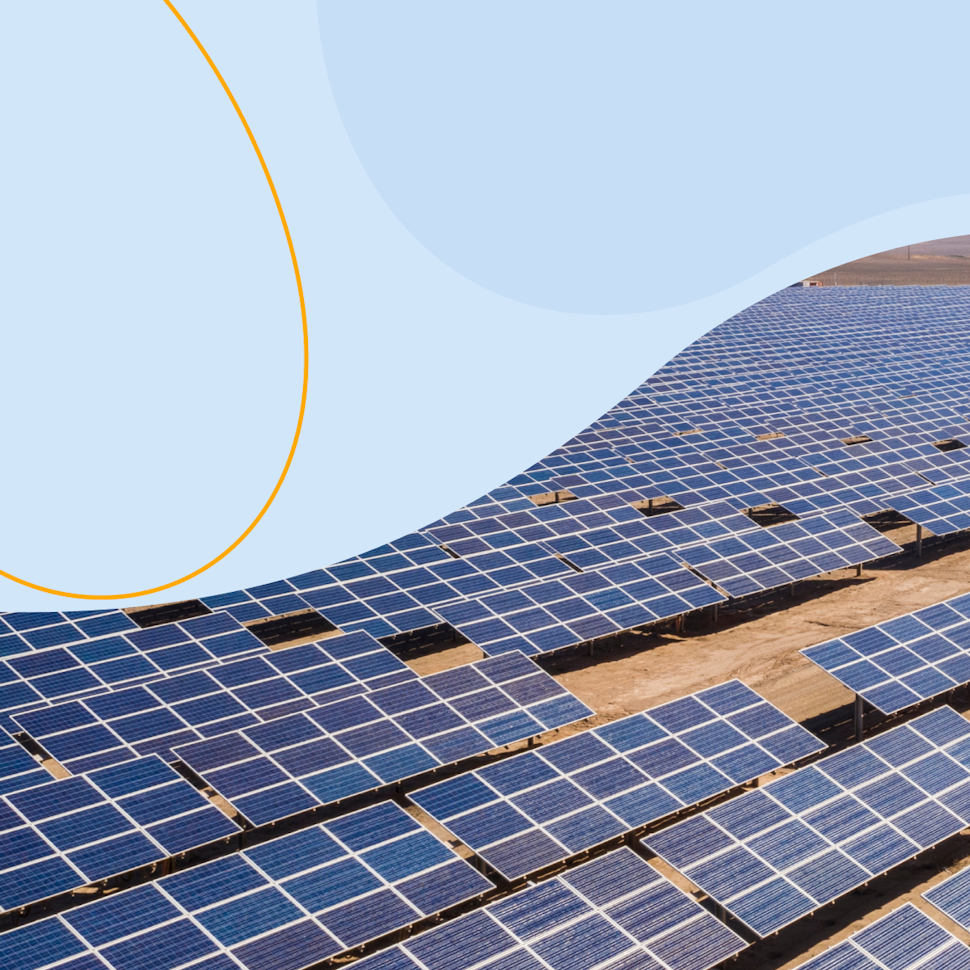- Solar energy blog
- Floating solar: emerging technology doubling installed power per year
Floating solar: emerging technology doubling installed power per year
Read on to find out why floating solar is booming, what its advantages and costs are, and discover the markets where it is thriving.


Laura Rodríguez
Business developer
Laura is a renewable and software industry sales professional, currently working at RatedPower as Sales Overlay in North America & Territory Manager Oceania. With a background in International Business and International Trade, Laura previously worked in the business strategy area in various companies as well as as a market analyst for the Government of Spain in Australia.

Content
Solar PV plants, especially when it comes to utility-scale, are considered one of the better and more well-established renewable energy technologies and have been encountering a steady rise in their use throughout the last years. This technology is also one of the cheaper options available in the market.
Taking advantage of an already mature technology and market which is that of solar PV, floating PV (FPV) entered the market first in 2007-2008 and has been facing a quick evolution within the energy market doubling installed power every year according to several studies.
More recent data by Apricum, reveals that as of August 2020, Floating solar had a cumulative capacity of approximately 2.6 GW and although it is still considered a niche, FPV is projected to experience an average growth rate of more than 20% in the next five years.
Pros and cons of floating photovoltaics
There has been a clear evolution of the annual and cumulative installed floating photovoltaic capacity from 2007 until 2020. The upward trend in the last 5 years proves that a greater interest is starting to be shown in this technology that is gaining more popularity and finding its way into countries' energy mixes.
In summary, the pros and cons of floating solar systems are stated below:
Pros
One of the most important advantages is the use of an alternative space for installing photovoltaic pv plants (water surfaces) which lowers costs and has a lower environmental impact. Additionally, in the paper “simulation of performance differences between offshore and land‐based photovoltaic systems”, published in Progress in Photovoltaics by Utrecht University discovered that projects in the sea perform better than ground-mounted solar generating 12.96% more power per year and a global horizontal irradiance (GHI) 8.54% higher than ground mounted systems.
Cons
Savings in the use of land or purchaseA higher initial investment cost due to the price of floatsReduction in water evaporation of the siteInstallation of the anchoring and mooring system could be quite complicatedPotential improvement in water quality and reduction in algae growthO&M are hared, potentially more frequent and tend to cost more due to the need of special boats and professional diversIncreased energy yield thanks to lower module temperaturesHigher soiling losses due to bird dropping depending on the siteCombination and synergies of energy projects: hydro power plants and floating power plants Reduction in both far horizon shading and shading betwen rows and structures Pros and Cons Floating Solar (Source: Where the sun meets the water by World Bank, ESMAP & SERIS)
Costs of floating solar photovoltaic systems
According to the Apricum analysis of the sector, we can state that costs incurred for developing a FPV system may vary immensely from project to project depending on the site. Factors that affect the cost structure include:
Water level variation: depth, quality, and salinity.
Anchoring and mooring system: determined in the design layout by the bathymetry of the water body.
Wind Loads: depending on the locally prevailing wind regime, the FPV plant design requires the ability to withstand stronger wind loads.
Distance to the shore, site accessibility, infrastructure, and proximity to the grid.
O&M costs: water-based electrical infrastructure causes higher O&M costs and may require a higher moisture resistance.
The capital costs of floating PV are still slightly higher or comparable to those of ground-mounted PV, attributable to the factors stated above. However, these costs are expected to drop over time due to better economies of scale achieved.
Comparing different bids from FPV Projects, total capital expenditures for turnkey floating PV installations in 2018 ranged between USD 0.8–1.2 per Wp, depending on the location of the project, the depth of the water and the size of the system. However, as seen in the graph, these costs have been decreasing to an average of 0.55 USD/Wp in 2019 and 2020.
On another note, the levelized cost of electricity (LCOE) for a 50 MW floating PV system is very similar from that of a ground-mounted system. The higher initial capital expenditures of the floating system are compensated by a higher expected energy yield which could range from 5% to 10-15% depending on the scenario and the climate.
Most powerful floating solar markets
Currently, there are more than 60 countries looking to deploy FPV projects, of those, more than 35 countries hold an estimated 350 operational FPV systems, with a cumulative capacity of approximately 2.6 GW.
Asia is expected to account for roughly two thirds of the global demand, mostly driven by China, India, South Korea, Taiwan, Thailand, and Vietnam.
The largest floating PV array currently operational is a 150MW project in Anhui, China. However, given their current popularity, it seems that floating pv systems don’t hold any record much time. The Anhui project will soon be overshadowed by massive developments elsewhere in the world. Already in the planification and development stage we can find a 145MW project in Indonesia, a 1GW plant in India, and an impressive 2.9GW project in South Korea.
Similarly in Europe, although the UK was the main player in the FPV market, France barged in inaugurating in october the most powerful floating solar pv plant in Europe (17 MW) by Akuo Energy. Again, this project was soon overshadowed by BayWa’s 27 MW solar farm in the Netherlands.
Several other projects are already underway such as 6 (11.1 MW each) projects in Belgium or hybrid hydro-solar plants in Portugal.
Outlook
In spite of the fact that floating photovoltaic systems have been deployed for more than a decade, and although the vast majority of today’s 2.6 GW was only built during the last five years, there is a global market potential of 400 GW to be developed under conservative assumptions.
However, to reach its potential, there is still lack of knowledge in areas such as O&M procedures, long-term environmental impact, as well regulations and permitting. On the other hand, other areas such as PV modules, cabling, materials, components, floats, mooring and anchoring, electrical layout, long-term energy yield forecasting and safety issues are better understood.
The deployment of floating solar looks promising as the technologies mature, economies of scale lower global prices and bring opportunities to a wide range of countries and markets.
Floating solar could double the existing installed capacity of solar PV but without the land acquisition required for ground-mounted installations. To put this into perspective, just by covering 3-4% of a large hydropower plant reservoir with floating solar could double the installed capacity and allow water resources to be more strategically managed and efficient by using solar energy during the day.
Latest stories
Related posts
Technology and engineering
Innovation in renewable energy: Developments expected in 2025
We look at the 10 biggest renewable industry developments that are making a green future possible, including perovskite solar cells, green hydrogen, and more.
Updated 18 MAR, 25

Technology and engineering
The era of standalone energy yield software is ending
Updated 19 APR, 22

Technology and engineering
How to battle soiling losses with RatedPower
How do soiling losses affect the output from a solar energy system and how can RatedPower help to account for them in a PV project?
Updated 22 FEB, 22

- RatedPower
- Solar energy blog
- Floating solar: emerging technology doubling installed power per year


